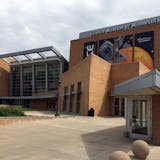ROCHESTER - Despite buying up millions of dollars worth of downtown real estate, the University of Minnesota Rochester may not begin construction of its long-awaited education district for at least another decade.
The acknowledgment was one of the notable findings in the school’s latest master plan update, which will go before the U’s Board of Regents in September. The comprehensive “Campus and Climate Action Plan” is the second of its kind for the university, which began welcoming students in 2009 and remains the newest of the five University of Minnesota campuses.
The Rochester campus has spent $10.2 million in university funds and city sales tax revenue since 2011 on 4.8 acres at the southern edge of downtown for a future campus buildout. When the initial master plan was created in 2014, with the city abuzz about the start of Destination Medical Center, university officials anticipated the first building going up in six to eight years.
Those plans, however, were put on pause in 2020 amid the COVID-19 pandemic. The biggest setback came when the downtown YMCA shut down, ending a promising partnership that was years in the making.
Now, as the university looks ahead to the next 10 years, it is reshaping its goals and timeline for the proposed education district. University officials have set flexible enrollment targets that would trigger potential development — with 2,500 students being the likely threshold for construction on university-owned land.
This fall, enrollment at the Rochester campus is expected to hit 1,000 students for the first time. The number reflects a 43% increase from the school’s enrollment five years ago.
“We believe that as we start approaching that 2,500 student mark … we’ll start initiating a capital project to develop that land for housing and for some of the academic spaces that we have talked about,” said Monique MacKenzie, the U’s director of campus and capital planning, during a presentation in June.
But, she cautioned, “We don’t believe that’s going to happen in 10 years.”


